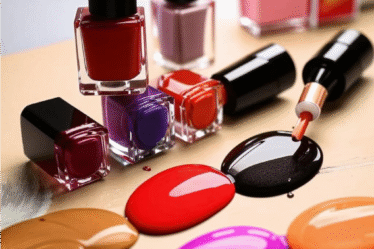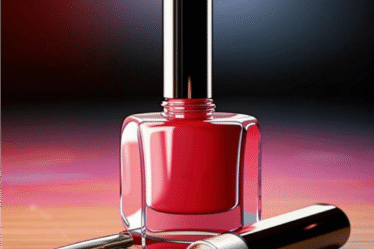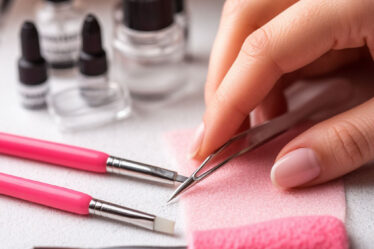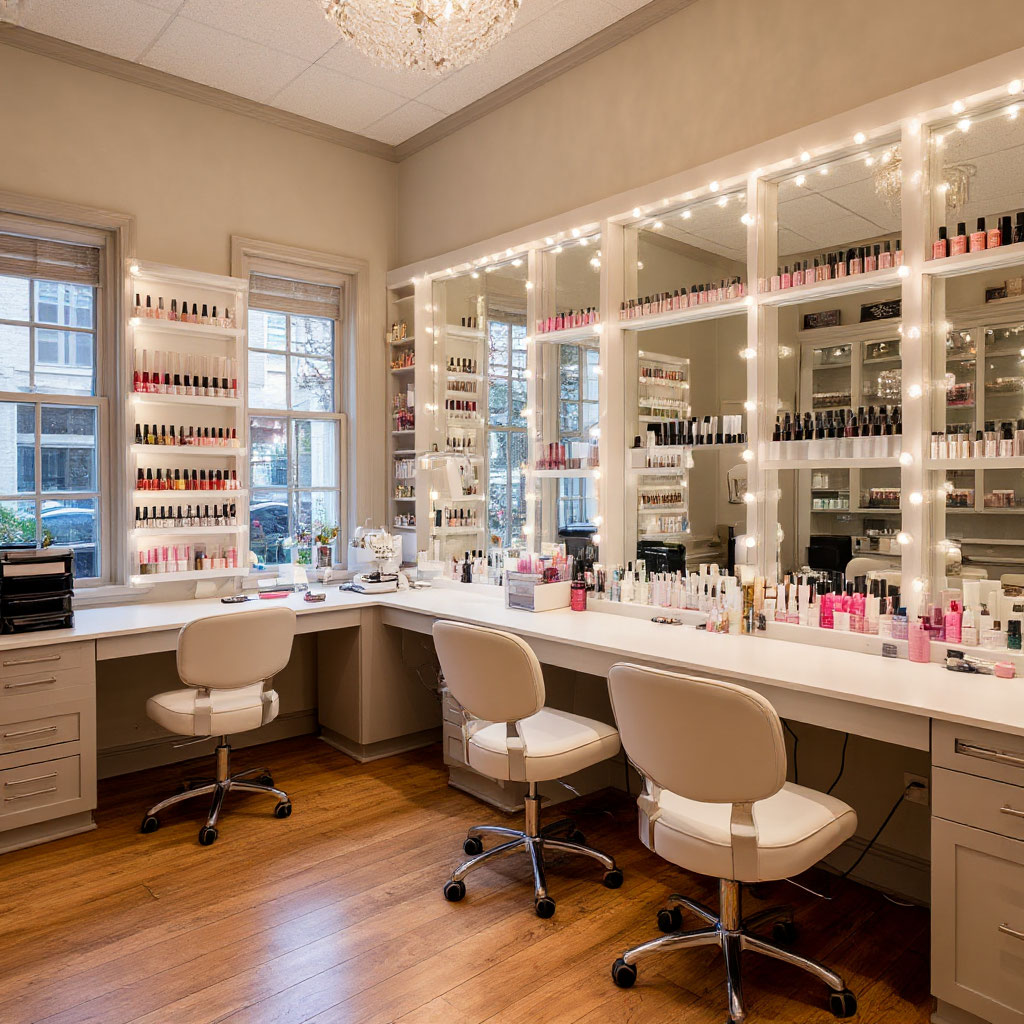
Getting nail extensions—is it really harmless? A flawless manicure with perfect shape and durable shine sounds like a dream. But beneath the glossy look often hides a harsh truth. The harm of nail extensions isn’t a myth—it’s something many women face when artificial length becomes routine.
Gel, acrylic, tips—these give instant results, but at what cost? Thinned, brittle, dehydrated nails after removal are the sad reality, requiring long-term recovery. Often, people don’t realize that damage to the natural plate is a direct result of frequent extension use.
So is it worth sacrificing your nail health for temporary beauty? This article breaks down how different types of extensions affect your nails—and what safer alternatives can keep them strong and healthy.
Thinking about nail extensions—or already wearing them? We’ve prepared a Beauty Club mini-brochure that covers balanced risks & benefits, safe wear time, a salon hygiene checklist, and aftercare. You’ll find a PDF download at the end of this article to save and use before your next appointment.
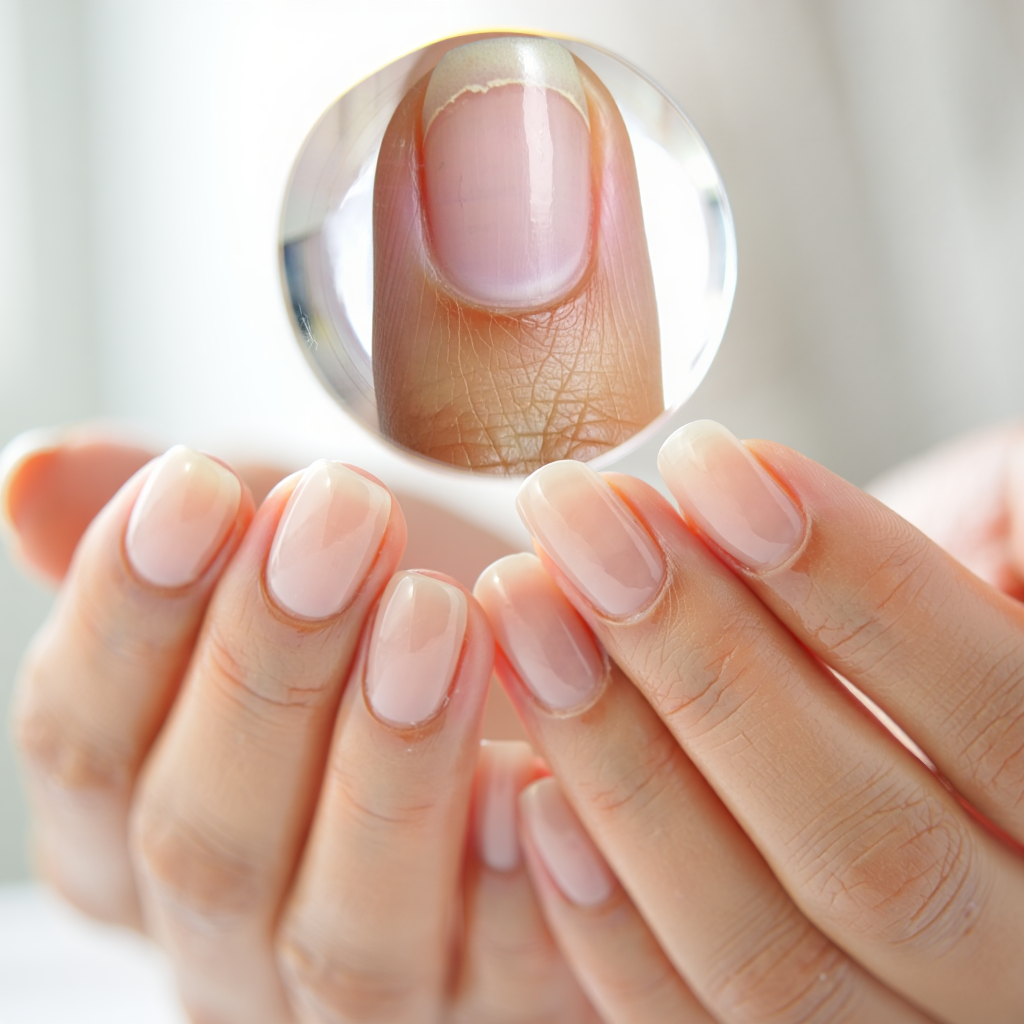
Types of Nail Extensions: The Risks of Gel and Acrylic
Nail extensions are wildly popular, but few consider the harm they cause to natural nails. Different methods come with different risks, so it’s important to know what you’re signing up for.
Gel Extensions: The Hidden Damage
Gel is often thought of as a gentler option—but that doesn’t make it safe. Gel hardens under a UV lamp, and the nail surface must be filed down to help it adhere. This leads to thinning and, over time, nail brittleness. Gel extensions are particularly damaging for those with naturally weak or thin nails.
Acrylic: Strong But Aggressive
Acrylic extensions offer durability, but at a steep price. The acrylic powder is mixed with monomer, releasing harsh fumes, and removal often involves filing down to the base of the nail. This causes severe damage—roughness, flaking, and long-term recovery.
Gel Polish: A Subtle Threat
Gel polish seems like a gentler choice—but frequent use takes a toll. Each layer requires buffing, and removal involves soaking in acetone or mechanical filing. This leads to:
- Dryness;
- Loss of natural shine;
- Brittle nails.
Press-On Nails: Convenient but Harmful
Tips seem harmless—they can be removed without chemicals. But the glue used often contains aggressive ingredients, and pulling them off can tear the top layer of the nail. After that kind of “quick” manicure, recovery can be a long road.
No matter the method, nail extensions put stress on natural nails. Gel and acrylic create a polished look, but the price is damage to your natural plate. If you can’t go without enhancements, opt for gentler methods and take breaks between sessions.
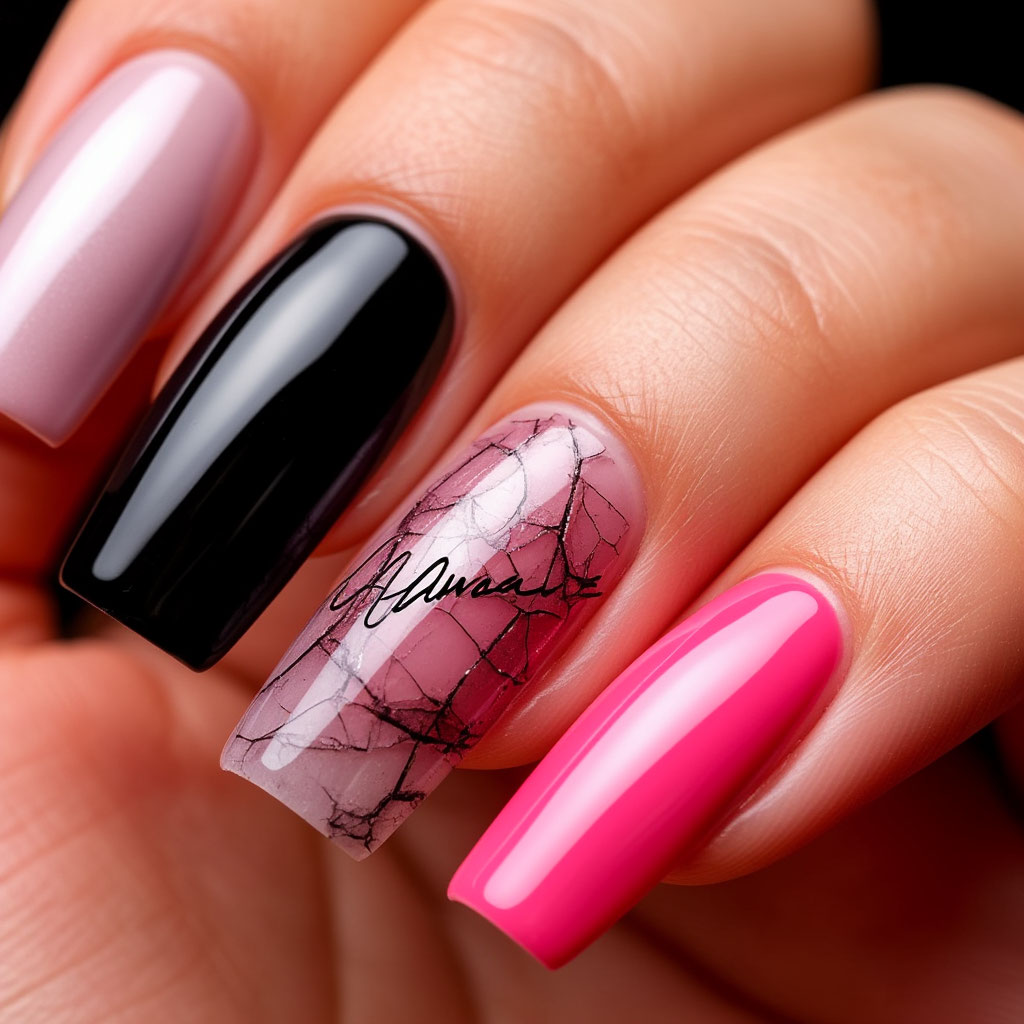
How Damage Happens: The Hidden Effects
A beautiful manicure shouldn’t come at the cost of healthy nails. The harm of nail extensions isn’t always instant—but over time, the damage becomes obvious.
Mechanical Damage: The Cost of Adherence
Before applying gel or acrylic, the technician files the nail’s top layer. It’s crucial for adhesion—but this step causes most of the damage. With repeated treatments, the plate thins, weakens, and starts to peel. If your nails are already thin or brittle, it’s even more dangerous.
Dehydration: The Price of Longevity
Gel and acrylic form a dense layer that blocks moisture and airflow. This leads to dehydration and fragility. Even after removal, the nail takes time to bounce back. Regular extension wearers are most at risk—especially without breaks.
Chemical Exposure: The Invisible Danger
Extension products are full of aggressive chemicals. Acrylic systems emit strong fumes, and gel requires long UV exposure. When applied or removed incorrectly, these chemicals seep into the nail, worsening the damage.
Infection Risk: Beauty with a Side of Bacteria
Poor hygiene or unskilled application increases the risk of fungal and bacterial infections. Under artificial layers, microorganisms thrive. Recovery can take months and may need medical attention.
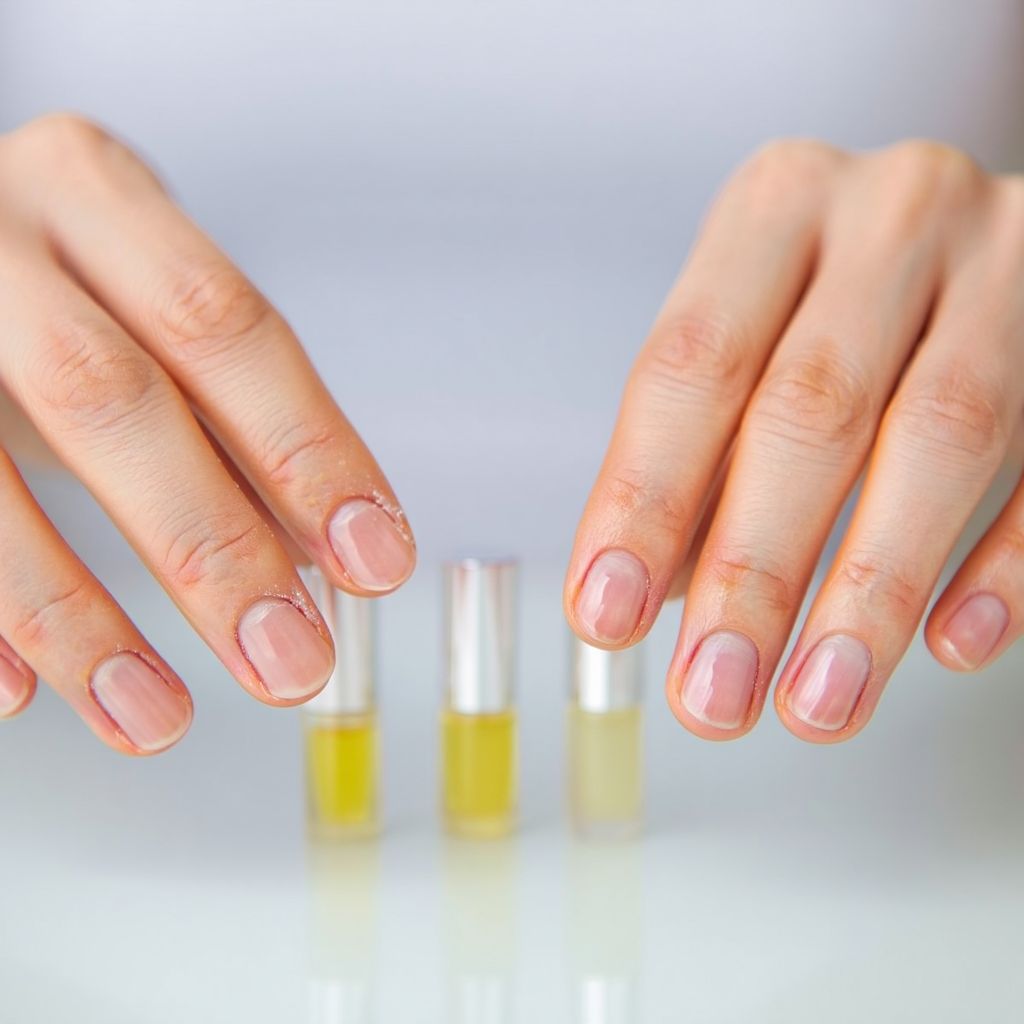
Recovery After Removal: How to Bring Nails Back to Life
After removal, nails often look devastated—thin, weak, and dull. The harm of nail extensions becomes obvious, and that’s when recovery must begin. Thankfully, full healing is possible with a thoughtful approach.
Never Peel It Off Yourself
One of the worst things you can do is forcibly remove gel or acrylic. It tears away the upper nail layers, causing splitting and peeling. Professional removal is essential—it reduces, though doesn’t eliminate, the trauma.
Nail Recovery Timeline
Here’s a step-by-step recovery plan with a summary table:
| Week | Key Focus | Recommended Actions |
|---|---|---|
| 1–2 days | Detox | Avoid polish; apply oils and keratin serums |
| 1–2 weeks | Intensive Nourishment | Use creams with panthenol and vitamin E; oil baths 3–4x weekly |
| 3–4 weeks | Structural Repair | Use calcium/protein-based nail treatments; try paraffin wraps |
| 5–6 weeks | Maintenance | Light protective polishes; avoid new extensions |
Salon Treatments That Help
Spa nail treatments with paraffin and collagen deliver fast results. Japanese manicures use natural ingredients to both treat and enhance the nails. These are ideal after long-term acrylic use.
At-Home Recovery: Simple Yet Effective
Once the extensions are off, home care becomes vital. Here are tried-and-true methods to aid recovery:
- Oil Baths: Daily 10–15-minute soaks in warm olive or almond oil enriched with vitamin E;
- Strengthening Masks:
- Lemon juice + sea salt;
- Honey and egg masks;
- Clay wraps;
- Healthy Diet:
- Calcium-rich foods (cheese, sesame);
- Keratin sources (eggs, fish, chicken);
- Biotin supplements;
- Gentle Manicure Practices:
- Use glass files instead of metal;
- File only when nails are dry;
- Switch to machine manicures instead of cuticle cutting;
- Protective Coatings:
- Use calcium-based polishes 2–3 times a week;
- Try vitamin-infused bases and serums;
- Nail Plate Massage:
- Daily 2–3-minute rubs with castor oil to boost blood flow and strengthen structure;
- Moisture Routine:
- Creams with urea and panthenol;
- Nighttime nourishment + cotton gloves.
How Long Until Full Recovery?
It depends on the damage. After one gel extension session, nails usually heal in 4–6 weeks. If they’ve been weakened by years of acrylic, expect 3–6 months. In severe cases, consult a podiatrist or dermatologist.
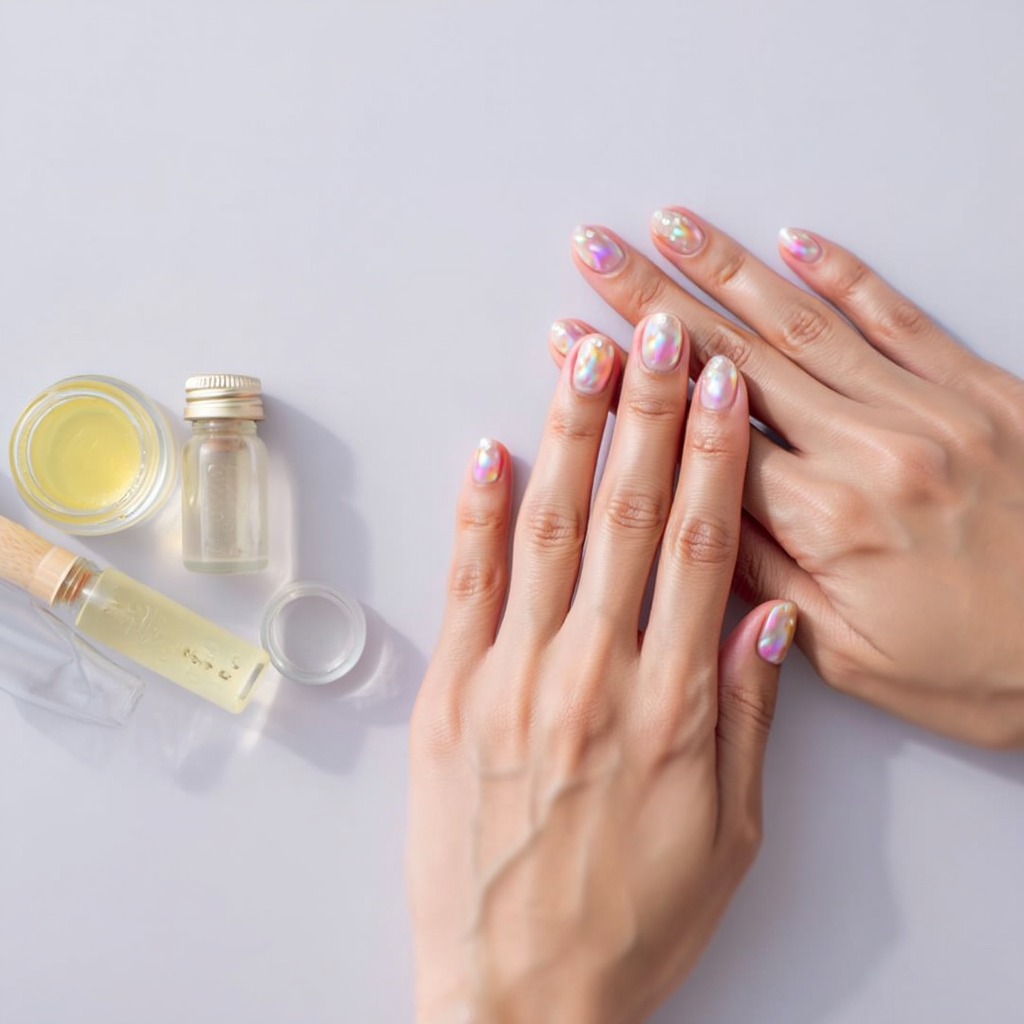
Alternatives to Extensions: Nail Beauty Without the Harm
Many believe a perfect manicure is impossible without extensions. But the harm of nail extensions is well-documented, and there are plenty of healthier choices.
Biogel: Gentle for Fragile Nails
Unlike harsh acrylics, biogel includes nourishing ingredients. It forms a protective layer that prevents nail brittleness while offering a polished look. Best of all, it’s made of up to 70% natural materials.
Japanese Manicure: For Natural Shine
This method skips both gel and acrylic. Instead, it uses ingredients like pearl powder, silk fibers, and wax. The result? Shiny, healthy nails—ideal for those recovering from extension damage.
Paraffin Therapy: Deep Nourishment
Regular paraffin sessions heal dryness and restore moisture. They’re perfect for nails recovering from aggressive materials.
Smart Gel Polish Use
Used wisely, even gel polish can be safe. Follow these three rules:
- Take breaks between sessions;
- Use nourishing base coats;
- Remove it professionally.
Natural Care Is Sometimes the Best Care
Sometimes, the best thing you can do is let your nails rest. With oil soaks, salt baths, and cuticle massage, you can see huge improvements in 2–3 months—no drastic treatments needed.
Gentle alternatives let you enjoy beauty without sacrificing nail health.
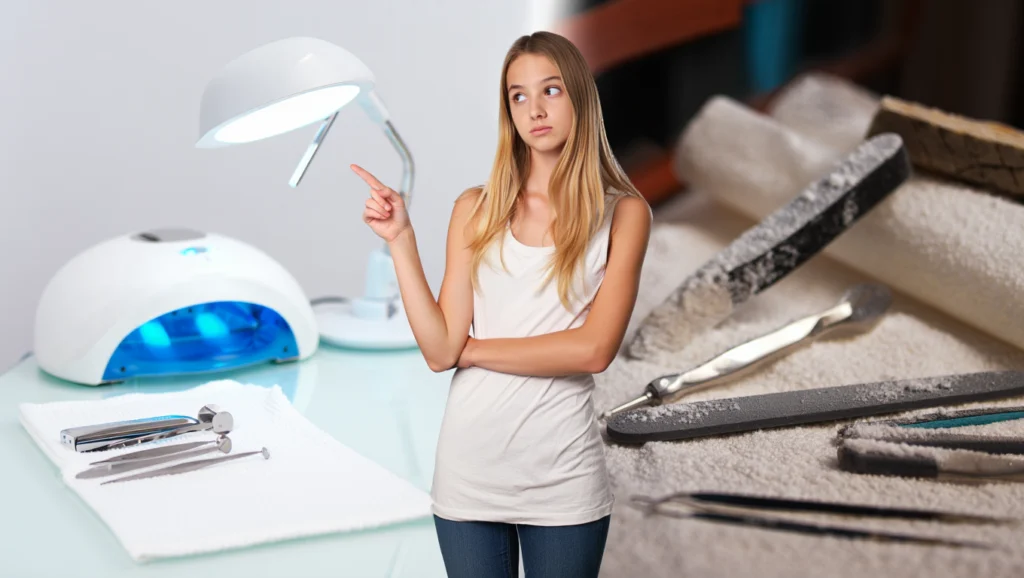
Choosing the Right Nail Technician: Your First Line of Defense
When it comes to preventing the harm of nail extensions, choosing the right technician is more important than any product or aftercare. A skilled professional can make all the difference between healthy nails and long-term damage.
Why Experience Matters
An experienced nail technician understands how different materials—gel, acrylic, biogel—interact with natural nails. They assess your nail condition before the procedure and may even refuse to do extensions if your plate is too thin or brittle. That’s a sign of a true professional—not someone trying to make a quick sale.
Red Flags to Watch Out For
Avoid technicians who:
- Aggressively file the natural nail down to the base;
- Use strong-smelling acrylic products with poor ventilation;
- Skip basic sanitation steps or reuse tools;
- Rush through removal instead of softening the material properly.
What a Good Nail Tech Does Differently
A qualified specialist will:
- Lightly buff, not over-file;
- Use gentle removal products;
- Choose the right method for your nail type (capsule gel, biogel instead of acrylic);
- Recommend breaks and treatments for recovery, not constant reapplication.
They’ll also educate you on home care and how to strengthen your nails between visits.
Ask the Right Questions
Before booking an appointment, don’t hesitate to ask:
- What materials do you use (and are they hypoallergenic)?
- How do you remove extensions?
- Do you offer biogel or capsule techniques?
- Can you assess if my nails are healthy enough for extensions?
A reputable nail tech will happily answer—and explain their process.
Choosing the right technician is your first defense against long-term nail damage. It’s not just about beauty—it’s about trust, safety, and real expertise.
Expert Advice: How to Minimize the Harm of Nail Extensions
If you’re not ready to give up nail extensions entirely, that’s okay. Many aren’t. The key is to do them wisely. Here’s how to reduce the harm of nail extensions and protect your nail health in the long run.
Smart Techniques That Reduce Damage
Modern methods can significantly soften the effects of gel and acrylic:
- Capsule extensions: Gel is applied only to the free edge, leaving the nail plate intact;
- Biogel instead of acrylic: A gentler formula that doesn’t dry out the nails;
- Soak-off removal: No more aggressive filing—only softening and gentle lifting.
Rest Periods Are a Must
No matter how gentle the materials, your nails need breaks:
- After 3–4 months of continuous wear, take at least 4 weeks off;
- Use this time for oil treatments, nail masks, and strengthening serums;
- In summer, consider skipping extensions entirely and switching to natural manicures.
Letting your nails breathe is the simplest and most powerful form of recovery.
Emergency Recovery Tips
If your nails are brittle, peeling, or dull after removal:
- Start a paraffin therapy course (5–7 sessions recommended);
- Use professional keratin-based recovery serums;
- Avoid any coating or polish for 1–2 months.
Nail-Friendly Diet: Heal From Within
Even the best surface care won’t work if your body lacks nutrients. Add this to your daily meals:
- Protein-rich foods like eggs, fish, and cottage cheese;
- Omega-3s from avocado, flaxseed oil, or supplements;
- Vitamin complexes that include zinc, biotin, and silica.
Nail extensions don’t have to ruin your nails. With the right technician, smart choices, and proper care, you can enjoy beautiful hands without sacrificing your health.
Healthy nails are more than just a beauty trend—they’re a reflection of self-care and balance. While nail extensions can offer a polished look, it’s important not to let aesthetics come at the cost of long-term nail health. By understanding the risks, choosing the right materials and technician, and committing to regular recovery, you can enjoy beautiful hands without damage. Listen to your nails, give them rest, and let real beauty start from the inside out.
Want to keep length without compromising nail health? This brochure sums up safe wear intervals, removal do’s & don’ts, aftercare, and answers to common questions.
Download the brochure (PDF): Beauty Club — Nail Extensions & Nail Health

